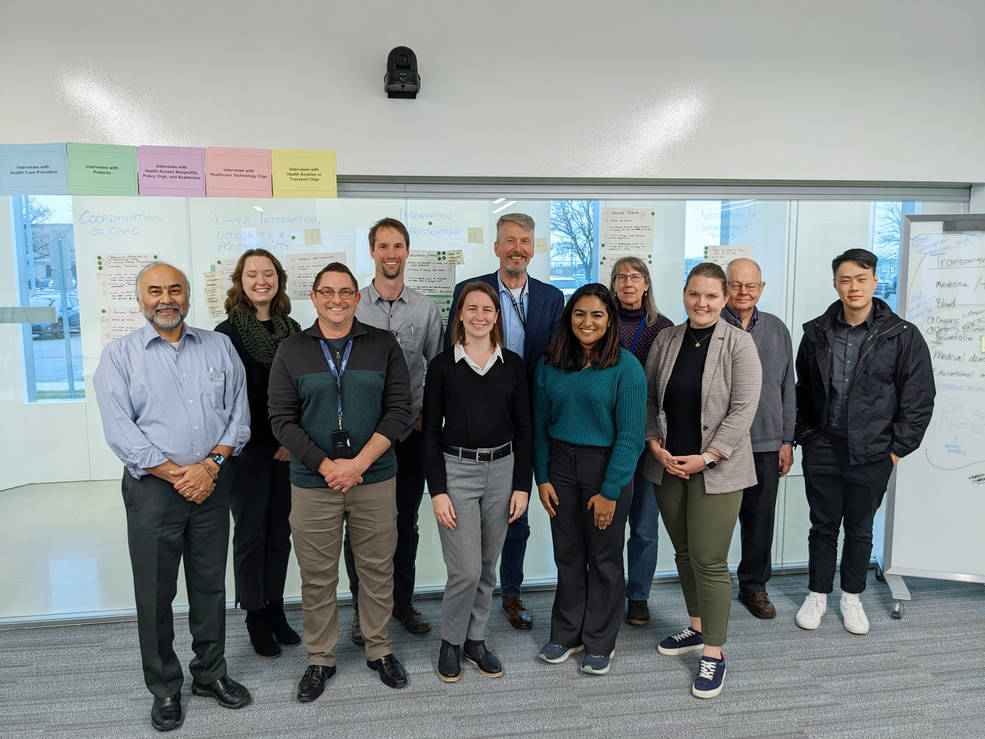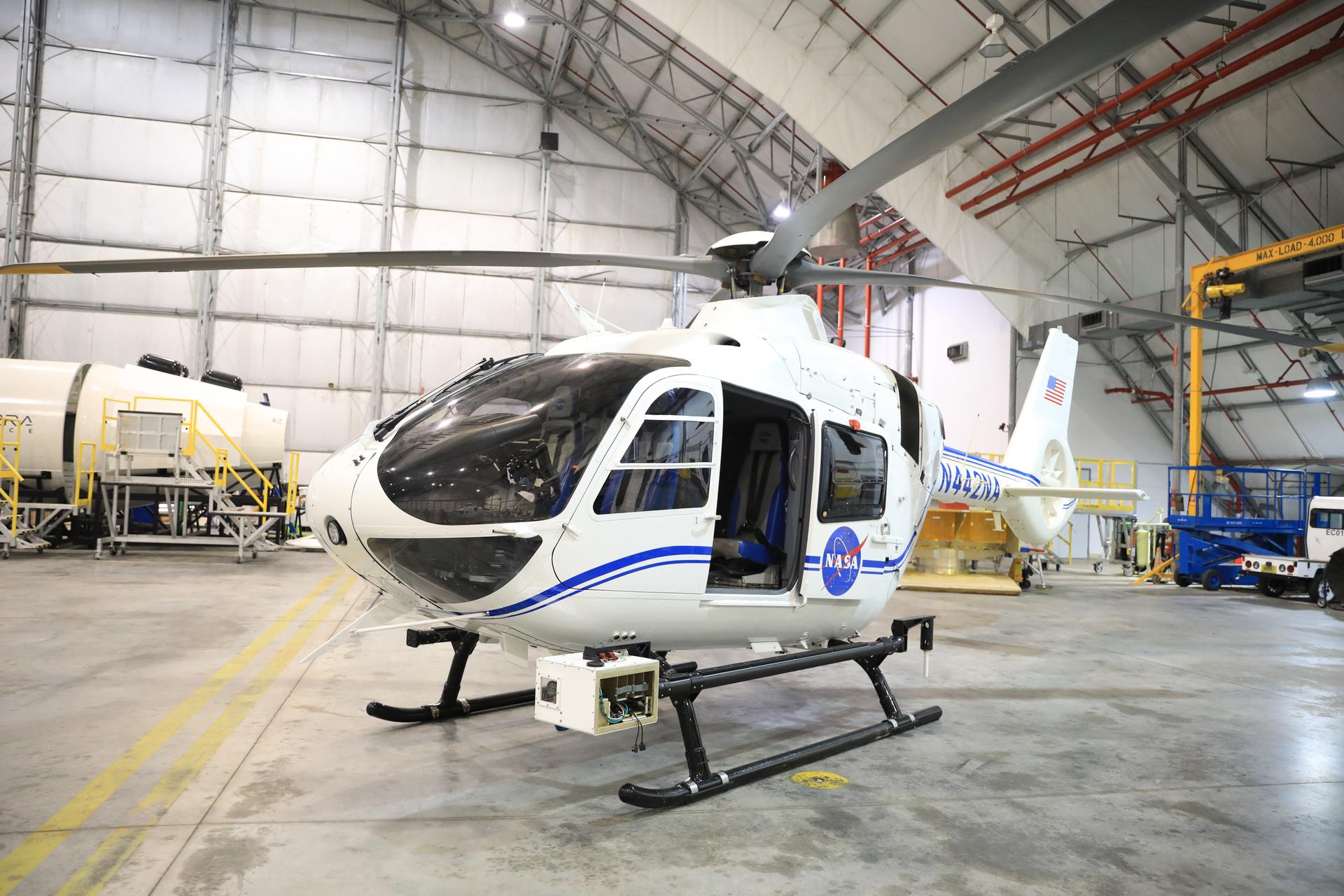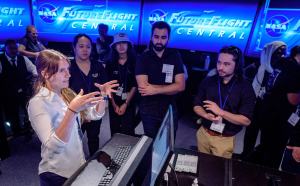A group of NASA interns recently made significant contributions to finding unique ways to apply NASA’s expertise to a complex real-world problem – enabling access to healthcare as distance to care increases.
The interns, all with multidisciplinary academic backgrounds, worked as a team alongside our aeronautical innovators to understand the challenges of healthcare access and how aviation could play a part in their solution.
In other words, NASA’s work in expanding access to our skies could help solve current and future problems faced by patients, health care providers, emergency medical technicians, medivac pilots, hospital systems, and other healthcare stakeholders – with potential applications ranging from faster medical evacuations to more efficient transportation of medical equipment.
However, the interns contributed more than technological ideas – they energized and inspired the whole project team to continue NASA’s endeavor to developing innovative new solutions once thought impossible.
“I’m not sure how we would have done what we did without our interns,” said Eric Brubaker, complex systems engineer at NASA’s Langley Research Center in Virginia and primary mentor to the interns. “They were invaluable to our team.”
Finding Opportunities in Challenges
The interns worked as part of the Convergent Aeronautics Solutions (CAS) project for a three-month period. CAS investigates seemingly improbable ideas that might solve problems in aviation affecting safety, environmental and community impacts, and global growth in air traffic.
In selecting interns for the project, CAS sought out individuals who have multidisciplinary backgrounds in both social and technological fields.
“Every intern we had this term combined multiple fields in their academic experience. We selected four students with design and engineering backgrounds alongside social science, qualitative research, and human-centered design experience – particularly applied to the healthcare sector,” said Brubaker.
Four interns were selected for the healthcare design challenge: Grace Burleson (University of Michigan), Jason Li (Georgia Institute of Technology), Trifeena James (Johns Hopkins University), and Robyn Richmond (Massachusetts Institute of Technology).
Each intern contributed a unique perspective to their project. Along with their expertise in mechanical engineering, members of the group also had advanced degrees in other fields such as anthropology, biomedical engineering, industrial/organizational psychology, and more.
Together, they formed a tiger team that approached their projects from many different angles. The interns joined the project on every design team meeting where they routinely provided valuable insights. They led interviews with stakeholders, helped synthesize information, and worked directly with senior NASA researchers.
For example, meeting at NASA’s Glenn Research Center in Cleveland, the team held a multi-day, in-person design session to identify specific problems that could be ripe for NASA to pursue. The problems were identified based on input the team gathered from more than 45 healthcare stakeholders and experts, such as medical evacuation pilots and healthcare providers in rural areas.
The interns contributed directly to the convergent problem areas uncovered by the team, including specific challenges within emergency and non-emergency medical transport, organ transport, and physical-virtual transitions to advance in-home health care.
“Collectively, our team identified problem spaces that were not visible to any one of us individually. These problems were convergent across multiple stakeholders’ needs, future technology, aviation, and health trends and NASA’s existing research and capabilities. This is one kind of environment where breakthroughs can occur, and the interns were a big part of that,” said Brubaker.
NASA personnel greatly valued the energy and insights the interns brought to the group. In a questionnaire about the experience, each participant gave the interns rave reviews.
“The interns energized the team, bringing knowledge, enthusiasm, and optimism,” wrote one participant.
In addition to the four interns on the healthcare design team, three additional interns were selected to support other CAS projects: Elisabeth Mah (Columbia University), Heather Volchko (Old Dominion University), and Matthew McGoffin (University of California, Berkeley).
With backgrounds in industrial/organizational and developmental psychology, Mah and Volchko developed survey measures and interview protocols supporting CAS’s internal metrics and workforce development goals. McGoffin used his background in business and innovation to lead a benchmarking study to learn from other CAS-like innovation centers across the country.
During their term with NASA, one value that resonated with and united all the interns was pursuing one of NASA’s mission goals: to benefit all humankind. Their motivation was to positively affect everyday life in previously unforeseen ways through NASA’s work.
“That’s why we joined NASA,” said Brubaker.
Six interns from the group are continuing with NASA for another term, and two new interns have been added to the CAS team.
Interested in internship opportunities? Check out the NASA Internship Programs page for information about our programs, frequently ask questions, and more.


































